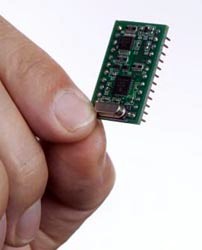Researchers with the U.S. Department of Energy’s Lawrence Berkeley National Laboratory and the University of California (UC) Berkeley, have integrated ultra-thin layers of the semiconductor material indium arsenide onto a silicon substrate to create a nanoscale transistor with working electronic properties. Indium arsenide offers several advantages as an alternative to silicon including superior electron mobility and velocity, which makes it a candidate for future high-speed, low-power electronic devices.
Ali Javey, a faculty scientist in the Berkeley Lab’s Materials Sciences Division and a professor of electrical engineering and computer science at UC Berkeley, led the research team. The devices they built operated at nearly the performance limits of and minimal leakage of current for this type of semiconductor, with other properties comparable to silicon transistors with comparable dimensions.
The challenge up to now has been to plug these semiconductors made with compounds other than silicon into assemblies with silicon substrates. Javey’s team developed an compound semiconductor-on-insulator technology (XOI) platform, that is parallel to today’s silicon-on-insulator (SOI) platform. Javey says, “we transferred ultrathin layers of single-crystal indium- arsenide on silicon/silica substrates, then fabricated devices using conventional processing techniques in order to characterize the XOI material and device properties.”
To make their XOI platforms, Javey and his collaborators grew single-crystal indium arsenide films only 10 to 100 nanometers thick on a preliminary source substrate then lithographically patterned the films into ordered arrays of nanoribbons. A nanometer is one-billionth of a meter.
After being removed from the source substrate through a selective wet-etching of an underlying sacrificial layer, the nanoribbon arrays were transferred to the silicon/silica substrate via a stamping process.
The team’s findings were published in the 10 November issue of the journal Nature (paid subscription required).
Related: N.C. State Patents Computer Chip Materials Technology
* * *


 RSS - Posts
RSS - Posts
You must be logged in to post a comment.